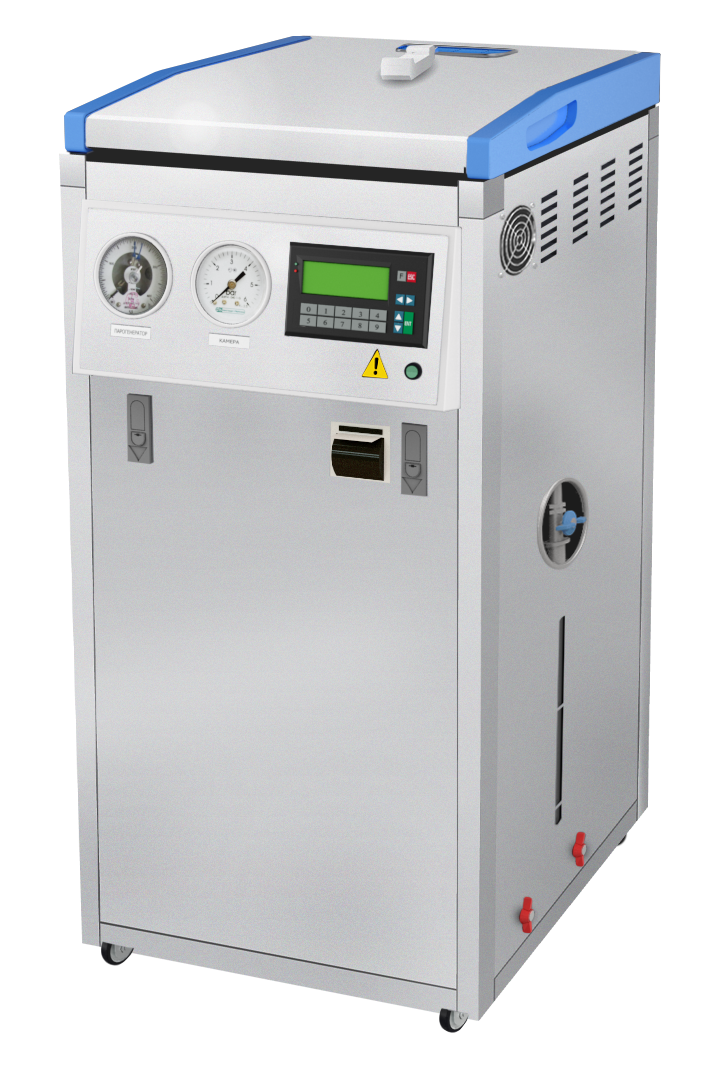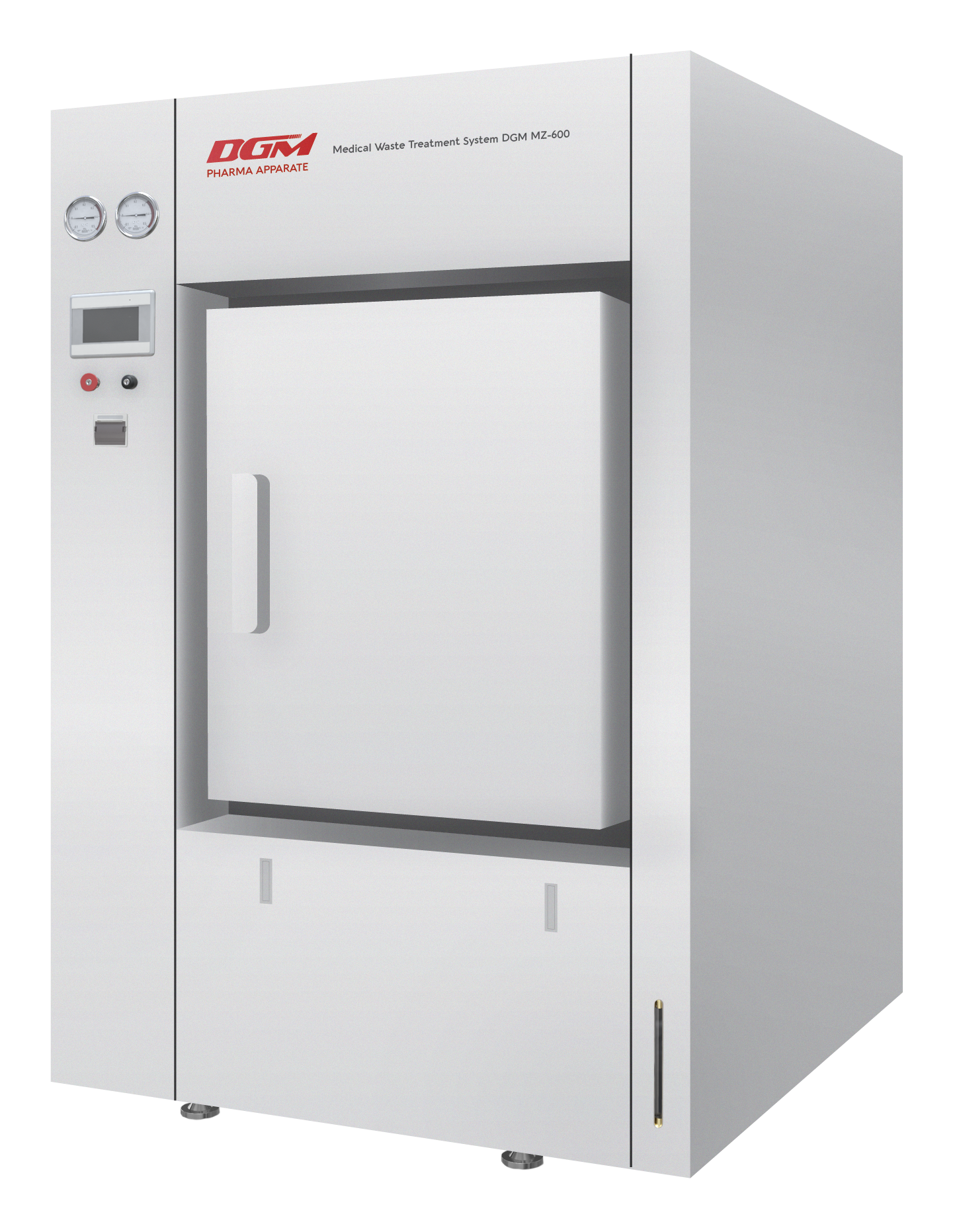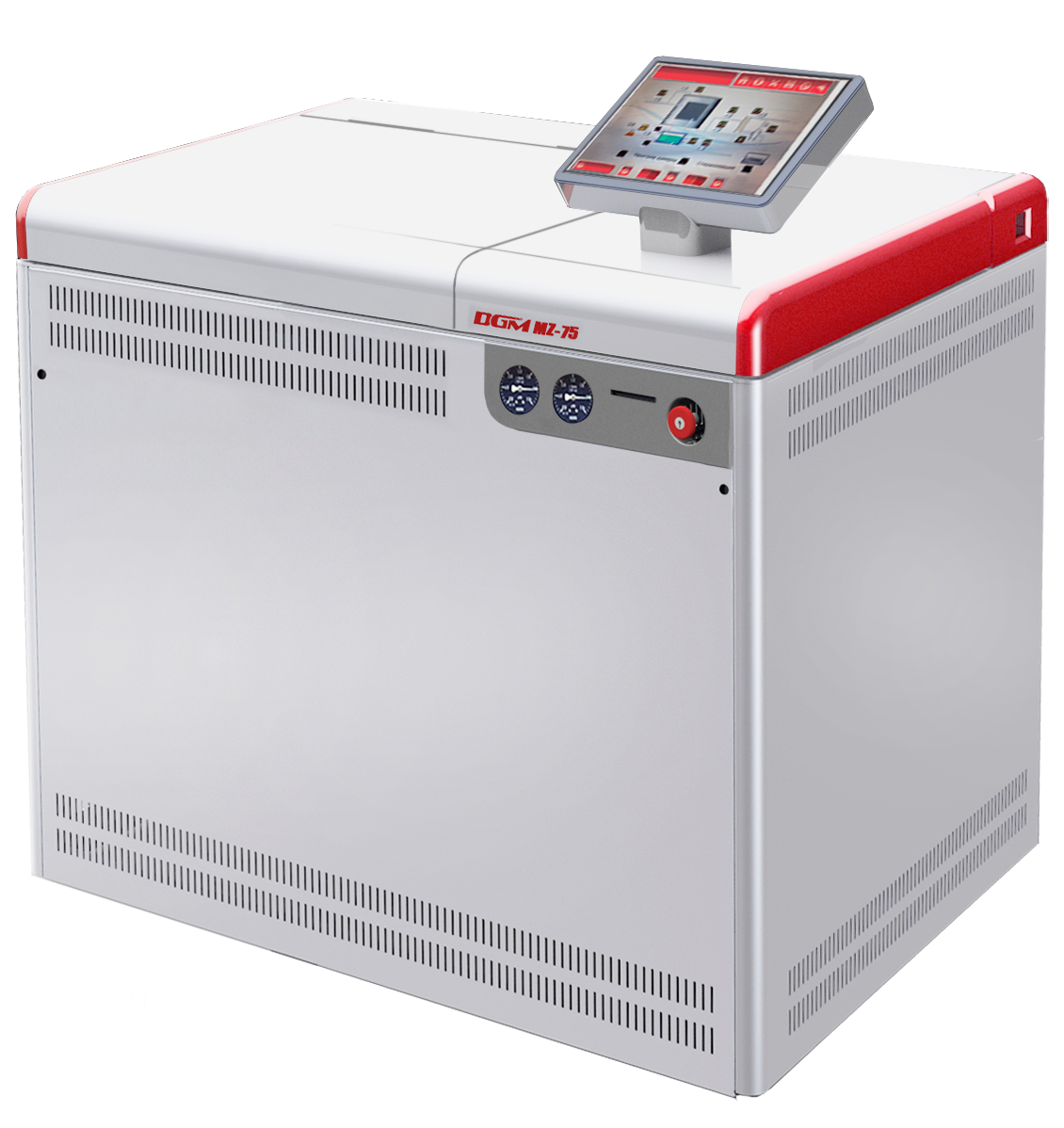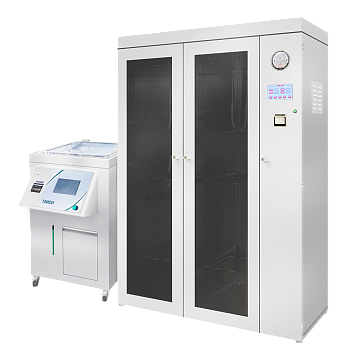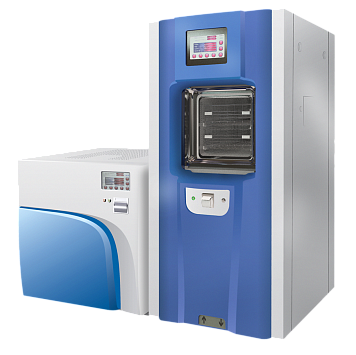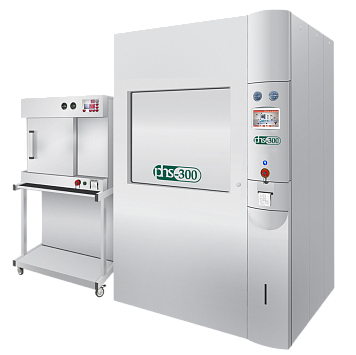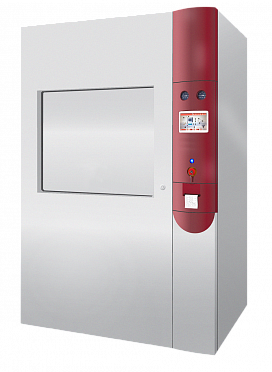
First of all, medical waste has an epidemiological danger to the personnel of healthcare facilities: workers may become infected if they carelessly handle stabbing waste contaminated with the blood of patients. In addition, when it gets to container sites, polygons, landfills, non-disinfected waste becomes dangerous for the population.
Raw materials from healthcare facilities are subdivided by classes according to their morphological composition and potential danger to the population and the ecosystem. Class B medical waste is categorized as extremely hazardous, since it contains pathogenic microorganisms (groups 1 and 2). Medical waste must be disinfected to prevent the spread of epidemiological contamination during its disposal.
Class B includes medical waste such as used dressings, body fluids, contaminated surgical instruments and glass items, etc.
A method of disinfection using hardware physical methods is applied to all medical waste of class B, which excludes the possibility of reuse of waste due to a change in its appearance.
Physical methods of disinfection are carried out using special equipment registered in the Russian Federation. An obligatory requirement is the availability of an operating manual in Russian. The operation of such equipment is based on one of the methods of exposure – microwave, thermal, radiation and other methods used in the territory of a medical facility (decentralized method).
After disinfection of class B waste, disposal is mandatory, waste is incinerated or buried. It is important to strictly follow the regulations and established disposal rules, use the containers and vehicles intended for this.
Each healthcare facility addresses the problem of hazardous medical waste management in its own way. With a centralized approach, garbage is taken out of healthcare facilities and disinfected in special areas. Waste enters incinerators or pyrolysis plants. Some large health facilities also install incinerators or steam sterilization equipment. After processing, waste becomes safe and can be disposed of together with class A waste. A decentralized approach presupposes the presence of its own specially equipped site.
Class B medical waste can only be disinfected in a decentralized way, since it poses an epidemiological hazard. It is prohibited to store or transport it without any disinfection. It is taken out of large institutions every day, or 2–3 times a week for other facilities.
Pharmstandard-Medtechnika supplies medical waste destruction and disinfection equipment by Russian and Swiss manufacturers. The technology used in medical waste disinfection units was selected by the UN as a priority one and is completely safe for the environment.
The company offers the equipment for disinfection of medical waste with various chamber volumes, from 75 to 2000 liters. Disinfection units are used by medium and large medical organizations for fast and safe processing of large volumes of medical waste and are reliable and easy to use.
For more detailed information about the equipment, you can contact us using any of the methods specified in the "Contacts"





